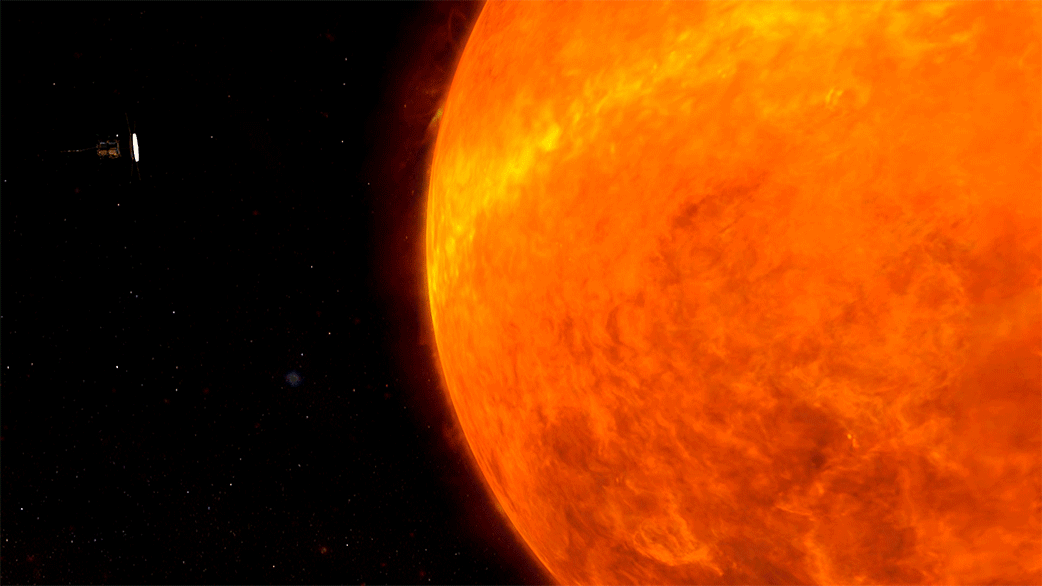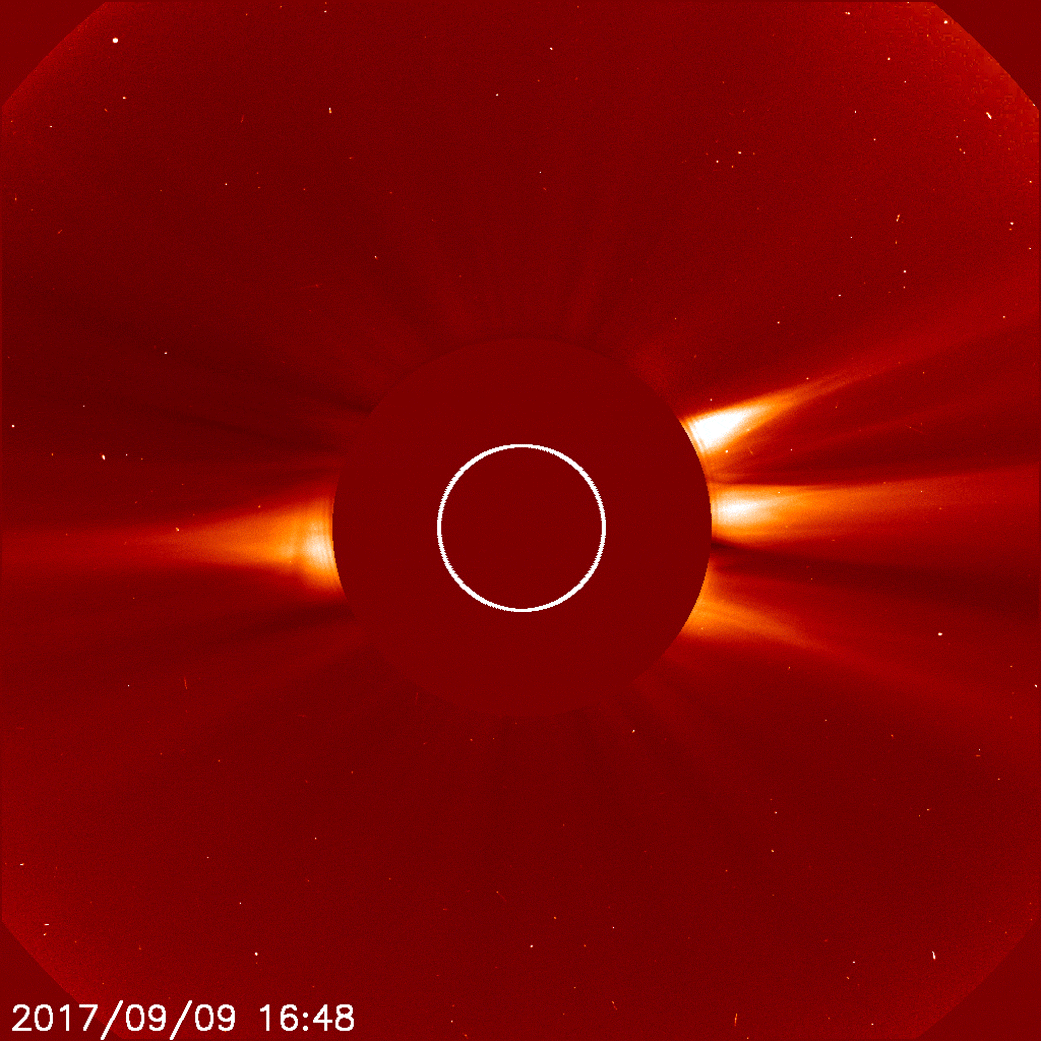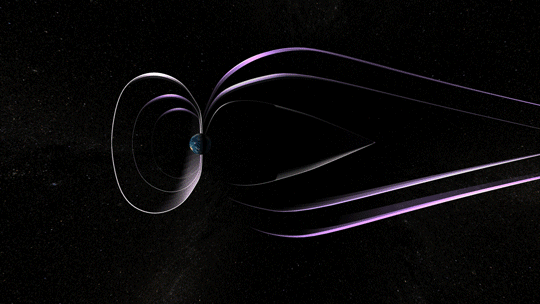It doesn’t take a rocket scientist to know space is weird. But just how weird might surprise you. Space is dominated by invisible electromagnetic forces that we typically don’t feel. It’s also full of bizarre types of matter that we never experience on Earth. Here’s five unearthly things that happen almost exclusively in outer space.
1. Plasma
On Earth, matter typically assumes one of three states: solid, liquid, or gas. But in space, 99.9% of normal matter is in an entirely different form — plasma. Made of loose ions and electrons, this substance is in a supercharged state beyond gas that’s created when matter is heated to extreme temperatures or is plied with a strong electric current.
Although we rarely interact with plasma, we see it all the time. All the stars in the night sky, including the Sun, are mostly made of plasma. It even appears occasionally on Earth in the form of bolts of lightning and in neon signs.
In comparison to gas, where individual particles chaotically zoom about, plasma can act collectively, like a team. It both conducts electricity and is influenced by electromagnetic fields — which operate under the very same force that keeps magnets on your fridge. These fields can control the movements of charged particles in plasma and create waves that accelerate the particles to immense speeds.
Space is brimming with such invisible magnetic fields that shape the paths of plasma. Around Earth the same magnetic field that makes compasses point north directs plasma through the space around our planet. On the Sun, magnetic fields launch solar flares and direct belches of plasma, known as the solar wind, that travel across the solar system. When the solar wind reaches Earth, it can drive energetic processes, like the auroras and space weather, which if strong enough, can damage satellites and telecommunications.
2. Extreme Temperatures
From Siberia to the Sahara, Earth experiences an extensive range of temperatures. Records exist as high as 134°F and all the way down to -129°F (57°C to -89°C). But what we consider extreme on Earth is average in space. On planets without an insulating atmosphere, temperatures wildly fluctuate between day and night. Mercury regularly sees days around 840°F (449°C) and and frigid nights as low as -275°F (-171°C). And in space itself, some spacecraft experience temperature differences of 60°F (33°C) just between their sunlit and shady sides. That would be like having a glass of water in the shade freeze on a hot summer day! NASA’s Parker Solar Probe, at closest approach to the Sun, will experience differences over 2,000 degrees.
The satellites and instruments NASA sends into space are carefully designed to withstand these extremes. NASA’s Solar Dynamics Observatory spends the vast majority of its time in direct sunlight, but a few times a year, its orbit passes into Earth’s shadow. During this cosmic conjunction, otherwise known as an eclipse, the temperature of the Sun-facing solar panels drops by 317°F (158°C). Onboard heaters, however, turn on to keep the electronics and instruments safe by permitting only a half a degree dip.
Similarly, astronaut suits are built to withstand temperatures from -250°F to 250°F (-157°C to 121°C). The suits are white to reflect light while in the sunshine, and heaters are placed throughout the inside to keep astronauts warm in the dark. They are also designed to provide consistent pressure and oxygen, and resist damage from micrometeorites and the Sun’s ultraviolet radiation.

3. Cosmic Alchemy
Every second, the Sun fuses about 600 million metric tons of hydrogen. That’s the mass of 102 Great Pyramids of Giza, 1,812 Empire State Buildings, or nearly all of the fish on Earth by some estimates.
Right now, the Sun is squeezing hydrogen into helium at its core. This process of joining atoms together under immense pressure and temperature, forging new elements, is called fusion.
When the universe was born, it contained mostly hydrogen and helium, plus a dash of a couple other light elements. Fusion in stars and supernovae have since furnished the cosmos with more than 80 other elements, some of which make life possible.
The Sun and other stars are excellent fusion machines. Every second, the Sun fuses about 600 million metric tons of hydrogen — that’s the mass of the Great Pyramid of Giza 102 times!
Along with the creation of new elements, fusion releases enormous amounts of energy and particles of light called photons. These photons take some 250,000 years to bump their way up the 434,000 miles (about 700,000 kilometers) to reach the Sun’s visible surface from the solar core. After that, the light only takes eight minutes to travel the 93 million miles (150 million kilometers) to Earth.
Fission, the opposite nuclear reaction that splits heavy elements into smaller ones, was first demonstrated in laboratories in the 1930s and is used today in nuclear power plants. The energy released in fission can create a cataclysmic bang. But for a given amount of mass, it’s still several times less than the energy created from fusion. However, scientists have not yet figured out how to control the plasma in a way to produce power from fusion reactions.
4. Magnetic Explosions
Every day, the space around Earth booms with giant explosions. When the solar wind, the stream of charged particles from the Sun, pushes against the magnetic environment that surrounds and protects Earth — the magnetosphere — it tangles the Sun and Earth’s magnetic fields. Eventually the magnetic field lines snap and realign, shooting away nearby charged particles. This explosive event is known as magnetic reconnection.
While we can’t see magnetic reconnection with our bare eyes, we can see its effects. Occasionally some of the perturbed particles pour into Earth’s upper atmosphere, where they spark the auroras.
Magnetic reconnection happens all across the universe wherever there are twisting magnetic fields. NASA missions like the Magnetospheric Multiscale mission measure reconnection events around Earth, which helps scientists understand reconnection where it’s harder to study, like in flares on the Sun, in areas surrounding black holes, and around other stars.
5. Supersonic Shocks
On Earth, an easy way to transfer energy is to give something a push. This often happens through collisions, like when the wind causes trees to sway. But in outer space, particles can transfer energy without even touching. This strange transfer takes place in invisible structures known as shocks.
In shocks, energy is transferred through plasma waves and electric and magnetic fields. Imagine the particles as a flock of birds flying together. If a tailwind picks up and pushes the birds along, they fly faster even though it doesn’t look like anything is propelling them forward. Particles behave much the same way when they suddenly encounter a magnetic field. The magnetic field can essentially give them a boost forward.
Shock waves can form when things move at supersonic speeds — faster than the speed of sound, that is. If a supersonic flow encounters a stationary object, it forms what is known as a bow shock, not unlike the bow wave that’s created at the bow of a boat anchored in a swift stream. One such bow shock is created by the solar wind as it plows into Earth’s magnetic field.
Shocks show up elsewhere in space, like around active supernovae ejecting clouds of plasma. In rare cases, shocks can be temporarily created on Earth. This happens when bullets and planes travel faster than the speed of sound.
Credits: NASA/Goddard Space Flight Center Scientific Visualization Studio
All five of these strange phenomena are common in space. Although some can be reproduced in special laboratory situations, they mostly can’t be found under normal circumstances here on Earth. NASA studies these weird things in space so scientists can analyze their properties, providing insight on the complex physics that underlies the workings of our universe.
By Mara Johnson-Groh
NASA’s Goddard Space Flight Center, Greenbelt, Md.




























